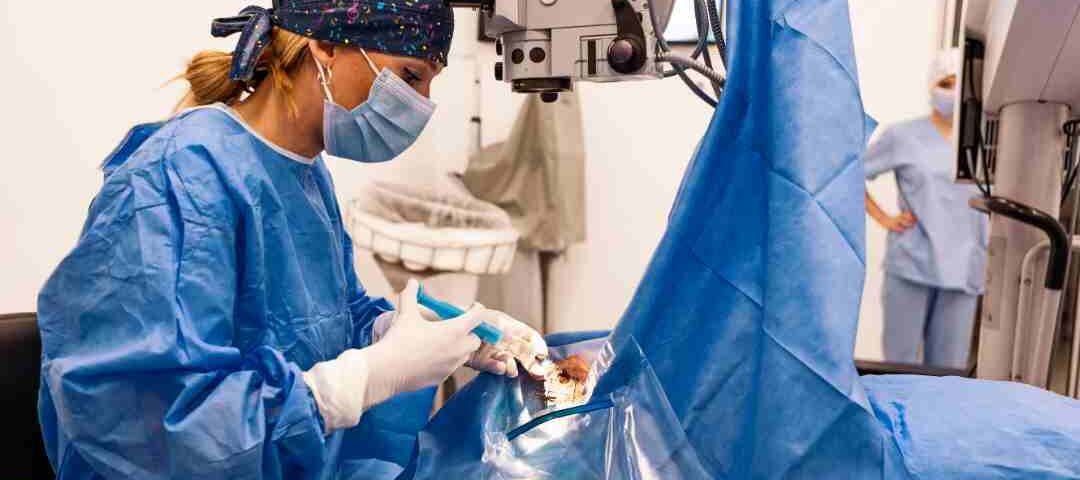Understanding Cataracts and Their Impact
Cataracts are a common eye condition that affects millions of Australians, particularly those over the age of 60. This condition occurs when the lens of the eye becomes cloudy, leading to blurred vision, difficulty with glare, and even problems with night vision. As cataracts progress, they can significantly impair daily activities, making it essential to seek treatment.
Fortunately, cataract surgery is a highly effective procedure that can restore clear vision. However, many individuals considering surgery often have questions regarding the associated costs and what factors influence these expenses. Understanding these elements can help patients make informed decisions about their eye health.
It is also important to recognise that the development of cataracts can be influenced by a variety of factors beyond age, including lifestyle choices and underlying health conditions. For instance, prolonged exposure to ultraviolet (UV) light, smoking, and excessive alcohol consumption have all been linked to an increased risk of cataract formation. Additionally, individuals with diabetes or those taking certain medications may find themselves more susceptible to this condition. Therefore, maintaining a healthy lifestyle, including a balanced diet rich in antioxidants and regular eye check-ups, can play a crucial role in prevention.
Moreover, the emotional and psychological impact of cataracts should not be overlooked. Many patients report feelings of frustration and isolation as their vision deteriorates, which can affect their overall quality of life. Engaging in activities that once brought joy may become challenging, leading to a decline in mental well-being. Support from family and friends, as well as professional counselling, can be invaluable in helping individuals navigate these emotional challenges while they await treatment or recovery from surgery.
The Cost of Cataract Surgery in Australia
The cost of cataract surgery in Australia can vary widely based on several factors, including the type of surgery, the surgeon’s experience, and the facility where the procedure is performed. On average, patients can expect to pay between AUD 3,000 and AUD 5,000 per eye for private surgery.
It’s important to note that these costs may not include additional expenses such as pre-operative consultations, post-operative care, and any necessary follow-up visits. Therefore, a comprehensive understanding of the total financial commitment is crucial for prospective patients.
Public vs. Private Healthcare Options
In Australia, cataract surgery can be performed through both public and private healthcare systems. Public hospitals typically offer the surgery at little to no cost to patients who meet certain eligibility criteria. However, waiting times for public surgery can be lengthy, often extending to several months or even years.
On the other hand, private healthcare allows for quicker access to surgery and often provides a more personalised experience. Patients opting for private surgery may incur higher costs, but they benefit from shorter waiting times and the ability to choose their surgeon and facility. This choice can be particularly important for those who prefer a specific surgeon known for their expertise or a particular hospital renowned for its facilities and patient care.
Factors Influencing Surgery Costs
Several factors can influence the overall cost of cataract surgery in Australia. These include:
- Type of Lens Implant: The choice of intraocular lens (IOL) can significantly affect the cost. Standard monofocal lenses are typically less expensive, while premium lenses, such as multifocal or toric lenses, can increase the overall price.
- Surgeon’s Experience: Highly experienced surgeons may charge more for their services, but their expertise can lead to better outcomes and reduced risk of complications.
- Facility Fees: The costs associated with the surgical facility, including operating room fees and anaesthesia, can vary. Private hospitals often charge higher fees compared to public facilities.
Additionally, geographical location can also play a significant role in determining the cost of cataract surgery. For instance, surgeries performed in metropolitan areas may be priced higher than those in regional centres due to the increased demand and overhead costs associated with urban healthcare facilities. Furthermore, patients should consider the potential for out-of-pocket expenses, particularly if they have private health insurance that may cover only a portion of the costs. Understanding the nuances of insurance coverage can help patients make informed decisions about their treatment options and financial planning.
Another critical aspect to consider is the advancements in surgical technology and techniques. Many clinics now offer laser-assisted cataract surgery, which can enhance precision and potentially improve recovery times. While this cutting-edge option may come with a higher price tag, it is essential for patients to weigh the benefits against the costs to determine the best approach for their individual circumstances. Engaging in thorough discussions with healthcare providers about the available options can provide clarity and ensure that patients are well-prepared for their surgical journey.

Insurance Coverage and Financial Assistance
For those considering cataract surgery, understanding insurance coverage is vital. Many Australians have private health insurance that may cover some or all of the costs associated with the procedure, particularly if performed in a private hospital.
However, it is essential to check the specifics of the policy, as coverage can vary. Some policies may only cover the cost of standard monofocal lenses, leaving patients to pay out-of-pocket for premium lens options.
Medicare Benefits
Medicare also plays a role in covering cataract surgery costs for eligible patients. Under the Medicare Benefits Schedule (MBS), patients can receive partial reimbursement for cataract surgery performed in a public or private hospital. This can significantly reduce out-of-pocket expenses, making the procedure more accessible.
Patients should consult with their healthcare provider to understand their eligibility for Medicare benefits and how these can be applied to their surgery costs. Additionally, it is worth noting that some patients may be eligible for further financial assistance through government programs or charitable organisations aimed at supporting those with limited means. These initiatives can provide crucial support, particularly for individuals who may face financial hardship but require surgery to improve their quality of life.
Furthermore, many hospitals and surgical centres offer payment plans or financing options that allow patients to spread the cost of their treatment over time. This flexibility can ease the financial burden and make it easier for patients to proceed with the necessary surgery without undue stress. It is advisable for patients to explore all available options and communicate openly with their healthcare providers about any financial concerns they may have, ensuring they receive the best possible care without compromising their financial stability.
Learn more on: What Factors Affect Cataract Surgery Cost and Why
Preparing for Cataract Surgery
Preparation for cataract surgery involves several steps to ensure a smooth process and optimal outcomes. Patients should schedule a comprehensive eye examination with an ophthalmologist to discuss their symptoms and determine the best course of action.
During the pre-operative consultation, the surgeon will assess the patient’s overall eye health and discuss the types of lenses available. This is also an excellent opportunity for patients to ask questions about the procedure, recovery, and costs involved.
What to Expect on the Day of Surgery
Cataract surgery is typically performed on an outpatient basis, meaning patients can return home the same day. On the day of the procedure, patients will need to arrive at the facility with someone who can drive them home afterward, as the effects of anaesthesia can impair their ability to operate a vehicle.
The surgery itself usually lasts around 15 to 30 minutes per eye. Patients will be given anaesthetic eye drops to numb the eye, and sedation may also be administered to help them relax. The surgeon will then remove the cloudy lens and replace it with the chosen intraocular lens.
Post-Operative Care and Recovery
Following cataract surgery, patients will need to adhere to specific post-operative care instructions to ensure a smooth recovery. This may include using prescribed eye drops to prevent infection and reduce inflammation, as well as avoiding strenuous activities for a few weeks.
Most patients experience improved vision within a few days after surgery, although it may take several weeks for vision to stabilise fully. Regular follow-up appointments with the surgeon are crucial to monitor healing and address any concerns.
Potential Risks and Complications
As with any surgical procedure, cataract surgery carries some risks. While complications are rare, they can occur. Potential risks include:
- Infection: As with any surgery, there is a risk of infection, which can be mitigated by following post-operative care instructions.
- Bleeding: Some patients may experience bleeding within the eye, which can affect vision.
- Retinal Detachment: Although rare, this serious complication can occur after cataract surgery and may require additional treatment.
Patients should discuss these risks with their surgeon and ensure they are comfortable with the potential outcomes before proceeding with the surgery.
Long-Term Considerations and Benefits
Investing in cataract surgery can lead to significant long-term benefits, including improved quality of life and enhanced independence. Many patients report being able to return to activities they once enjoyed, such as reading, driving, and participating in hobbies.
Furthermore, the cost of cataract surgery should be viewed as an investment in one’s health and well-being. Improved vision can lead to better safety, reduced risk of falls, and an overall enhancement in daily living.
Financial Planning for Cataract Surgery
For those concerned about the financial implications of cataract surgery, it is advisable to create a budget and explore various payment options. Many clinics offer payment plans that can help spread the cost over time, making the procedure more manageable.
Additionally, patients should consider discussing their financial concerns with their healthcare provider, who may be able to provide guidance on available resources and assistance programs.
Conclusion: A Clear Vision for the Future
Cataract surgery is a safe and effective solution for restoring clear vision and enhancing quality of life. While the costs associated with the procedure can vary, understanding the factors that influence these expenses can empower patients to make informed decisions about their eye health.
Whether opting for public or private healthcare, it is essential to consider the long-term benefits of investing in cataract surgery. With proper preparation and care, patients can look forward to a future filled with clearer vision and renewed independence.

